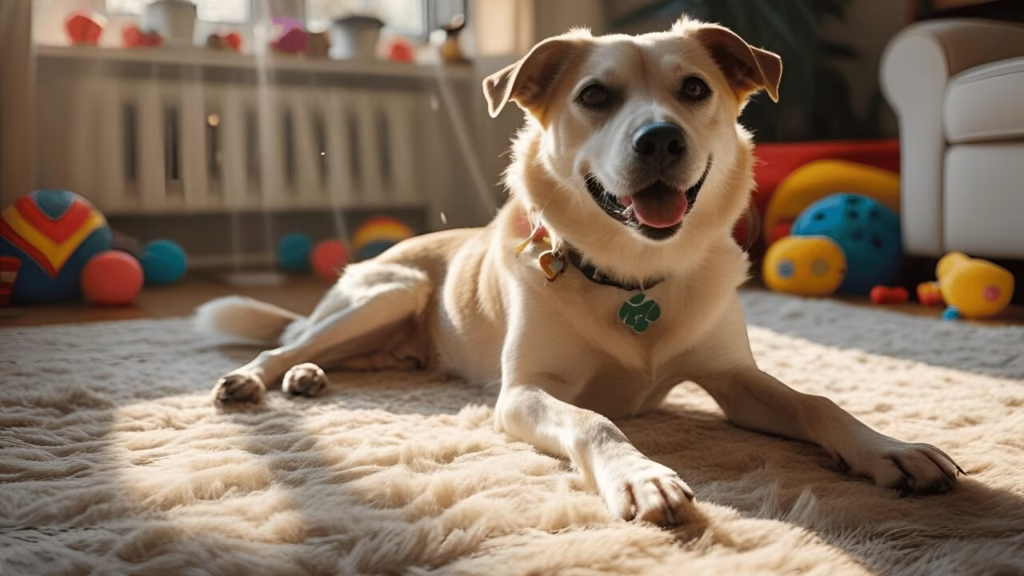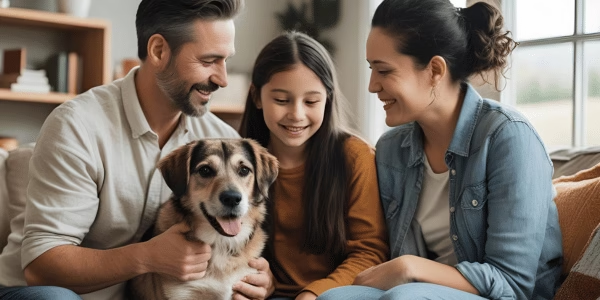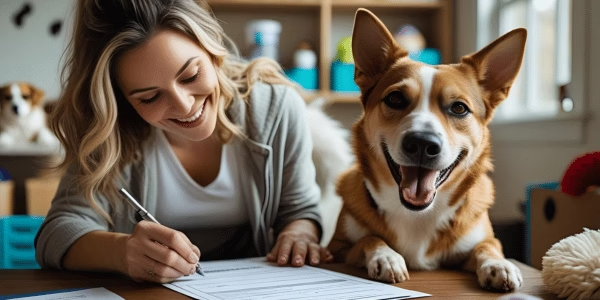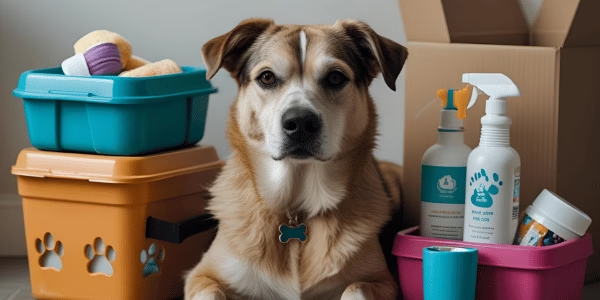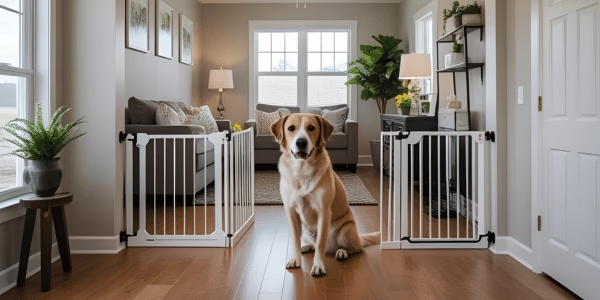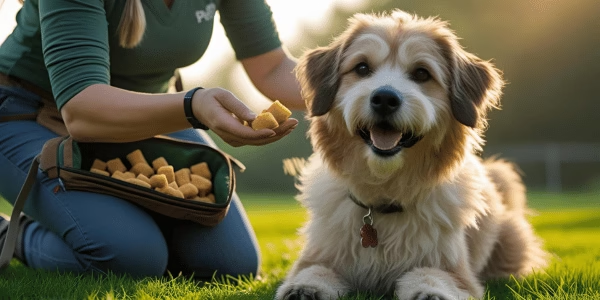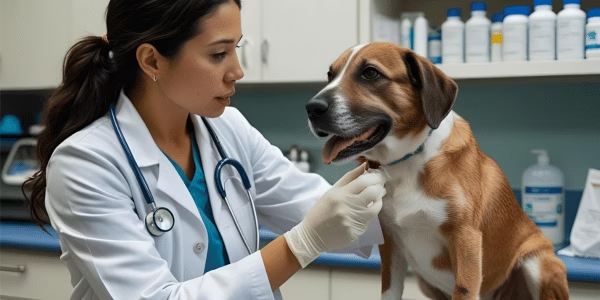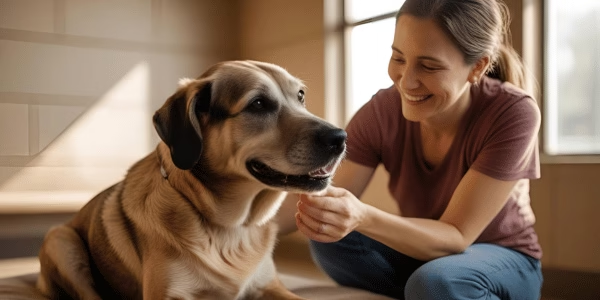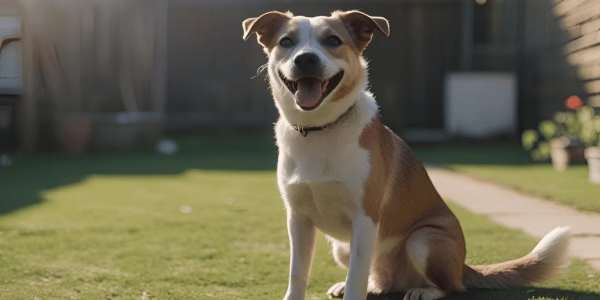Thinking about bringing a four-legged family member into your life? Learning how to adopt a rescue dog could be one of the most meaningful decisions you’ll ever make. The journey of rescue dog adoption isn’t just about saving a life – though that’s incredibly rewarding – it’s about discovering a loyal companion who will transform your daily routine, bring unexpected joy, and yes, probably steal your favorite spot on the couch.
Adopting a dog from a rescue organization has become increasingly popular, with millions of Americans choosing this path each year. But navigating the world of rescue dog adoption can feel overwhelming, especially when you’re faced with countless questions: Where do you start? What should you expect? How do you know if you’re ready? This comprehensive guide will walk you through every aspect of the adoption process, from understanding what makes rescue dogs special to celebrating your first year together.
Whether you’re a first-time dog owner or adding to your existing pack, this guide provides the detailed roadmap you need to make informed decisions and set both you and your future companion up for a lifetime of happiness together.
Understanding the World of Rescue Dog Adoption
Rescue dog adoption represents a fundamentally different approach to bringing a dog into your family compared to purchasing from breeders or pet stores. These remarkable animals often come with complex histories that have shaped their personalities, behaviors, and needs in unique ways.
The Reality Behind Rescue Dogs
Many people assume that dogs end up in rescues because they’re “problem dogs,” but this couldn’t be further from the truth. The reality is that dogs enter rescue systems for countless reasons that have nothing to do with their behavior or temperament. Economic hardship forces families to surrender beloved pets they can no longer afford to care for. Life changes like divorce, new babies, or job relocations create situations where families feel they cannot properly care for their dogs. Some dogs are found as strays, while others are rescued from neglectful or abusive situations.
Understanding these backgrounds helps explain why adopting a dog from a rescue requires patience, empathy, and realistic expectations. These dogs haven’t chosen their circumstances, and many are simply waiting for someone to give them a second chance at happiness.
The Emotional Journey of Rescue Dogs
Every rescue dog carries an invisible backpack of experiences that influences how they interact with the world. Some may be confident and outgoing, having maintained their trust in humans despite difficult circumstances. Others might be fearful or anxious, requiring gentle patience as they learn to trust again. Many fall somewhere in between, showing glimpses of their true personality as they gradually feel safe in their new environment.
The most important thing to remember is that behavioral challenges in rescue dogs are typically symptoms of their past experiences, not permanent character flaws. With consistent love, training, and patience, most rescue dogs bloom into wonderful companions who seem to understand they’ve been given a precious gift – a loving home.
The Science Behind the 3-3-3 Rule
Before diving into the practical aspects of how to adopt a rescue dog, it’s crucial to understand the psychological and physiological process dogs go through when transitioning to new homes. The widely recognized 3-3-3 rule provides a framework for understanding this adjustment period, though every dog’s timeline will be unique.
First 3 Days: Decompression Phase
During the initial 72 hours, your new rescue dog is likely experiencing sensory overload. Everything is new – new smells, sounds, people, routines, and environment. Their stress hormones are elevated, which can suppress appetite, cause digestive issues, and make them seem withdrawn or anxious.
During this critical period, your dog is primarily focused on survival and safety. They’re not yet ready to show their true personality or form deep bonds. Many new adopters worry during this phase because their dog seems uninterested in food, play, or affection. This is completely normal and expected behavior.
First 3 Weeks: Settling In
As stress hormones begin to normalize, your dog starts to understand that this new environment might be permanent. They begin to explore more confidently, establish preferences, and show glimpses of their personality. This is often when you’ll see the first tail wags, playful moments, or signs of attachment.
However, this phase can also bring new challenges. As your dog becomes more comfortable, they may start testing boundaries or exhibiting behaviors that were suppressed during the initial stress period. This is actually a positive sign – it means they’re feeling secure enough to be themselves.
First 3 Months: True Personality Emerges
By the three-month mark, most dogs have fully adjusted to their new homes and are showing their authentic personalities. The initial anxiety has largely resolved, and they’ve learned the household routines and rules. This is when the real bonding begins, and many adopters report feeling like they finally “know” their dog.
It’s important to note that some dogs, particularly those with traumatic backgrounds, may take longer than three months to fully adjust. Others might settle in more quickly. The 3-3-3 rule is a guideline, not a rigid timeline.
Comprehensive Guide to Finding Your Perfect Rescue Dog
The landscape of rescue dog adoption includes various types of organizations, each with distinct advantages and considerations. Understanding these differences helps you choose the best path for your specific situation and preferences.
Municipal Animal Shelters: The Front Lines of Animal Welfare
Municipal shelters, often operated by city or county governments, serve as the primary intake point for stray, abandoned, and surrendered animals in their communities. These facilities typically house the largest variety of dogs, from puppies to seniors, purebreds to mixed breeds, and everything in between.
Advantages of shelter adoption include:
- Lower adoption fees, typically ranging from $50-$200
- Immediate availability for adoption in most cases
- Opportunity to see many dogs in one location
- Often includes basic veterinary care in adoption fee
- Supporting your local community’s animal welfare efforts
Considerations when adopting from shelters:
- Limited background information on individual dogs
- High-stress environment may not showcase dogs’ true personalities
- Shorter adjustment periods before dogs are considered for euthanasia
- Less individualized attention and behavioral assessment
- May have higher rates of illness due to crowded conditions
Private Rescue Organizations: Specialized Care and Attention
Private rescue organizations operate through networks of volunteers and foster homes, allowing them to provide more individualized care and attention to each animal. Many rescues specialize in specific breeds, age groups, or types of dogs with special needs.
Benefits of rescue organization adoption:
- Extensive knowledge about each dog’s personality and behavior
- Dogs are typically fostered in home environments
- More thorough behavioral and medical evaluations
- Ongoing support and resources after adoption
- Often specializes in specific breeds or needs
- Usually includes comprehensive veterinary care
Considerations for rescue adoption:
- Higher adoption fees, typically $200-$600
- More extensive application and screening process
- Longer wait times for approval and placement
- May have specific requirements for adopters
- Limited geographic availability for some specialized rescues
Breed-Specific Rescues: Expertise and Specialization
For those with their hearts set on a particular breed, breed-specific rescues offer unparalleled expertise and knowledge. These organizations focus exclusively on rescuing, rehabilitating, and rehoming specific breeds, developing deep understanding of breed-specific needs, temperaments, and potential health issues.
Advantages of breed-specific rescues:
- Expert knowledge of breed characteristics and needs
- Specialized care for breed-specific health issues
- Network of breed-experienced adopters and volunteers
- Often maintain relationships with adopters long-term
- May offer breed-specific training and socialization
Considerations for breed-specific adoption:
- Limited availability depending on geographic location
- Potentially longer wait times for desired age or characteristics
- Higher adoption fees due to specialized care
- May have strict requirements based on breed needs
- Less variety in terms of size, temperament, and characteristics
Essential Pre-Adoption Research and Preparation
Successfully adopting a dog requires honest self-assessment and thorough preparation. The decisions you make before bringing your dog home will significantly impact the success of your adoption experience.
Lifestyle Assessment: Matching Energy and Needs
Different dogs have vastly different exercise requirements, and mismatched energy levels are one of the primary reasons adoptions fail. A high-energy Border Collie mix will be miserable in a sedentary household, just as a low-energy senior dog might feel overwhelmed in a very active family.
Consider your daily routine realistically. How much time can you dedicate to exercise, training, and interaction? Are you looking for a jogging companion or a couch buddy? Do you have a fenced yard, or will all exercise happen on leash? These factors should heavily influence your choice of dog.
Living Situation Considerations
Your living environment plays a crucial role in determining which dogs will thrive in your home. Apartment living isn’t automatically incompatible with dog ownership, but it does require careful consideration of size, energy level, and barking tendencies. Some large dogs are perfectly content in smaller spaces, while some small dogs require more room to run and play.
If you rent your home, verify your lease agreement and any pet policies before beginning the adoption process. Many rescues will require proof that pets are allowed in your living situation.
Financial Preparedness: The True Cost of Dog Ownership
While adoption fees are just the beginning of your financial commitment, many potential adopters underestimate the ongoing costs of responsible dog ownership. Beyond basic needs like food and routine veterinary care, consider potential expenses like:
- Emergency veterinary bills (which can easily reach thousands of dollars)
- Professional training or behavior modification
- Pet insurance or dedicated emergency fund
- Boarding or pet sitting when you travel
- Grooming and maintenance supplies
- Replacement of damaged household items during adjustment period
Financial stress can strain the human-animal bond and lead to difficult decisions down the road. Honest budgeting before adoption helps ensure you can provide consistent, quality care throughout your dog’s lifetime.
Navigating the Adoption Process: Step-by-Step Guide
The rescue dog adoption process varies between organizations, but understanding common elements helps you prepare for what to expect and present yourself as a strong candidate for adoption.
Step 1: Research and Application Submission
Most rescues require detailed applications that explore your experience with pets, living situation, lifestyle, and expectations for your new dog. These applications aren’t designed to exclude people but to ensure good matches between dogs and families.
Tips for strong applications:
- Be completely honest about your experience level and expectations
- Explain your lifestyle and how a dog fits into your routine
- Demonstrate that you’ve researched the responsibilities of dog ownership
- Show flexibility in terms of age, size, or breed characteristics
- Provide complete and accurate contact information for references
Step 2: Reference Checks and Interviews
Many rescues conduct phone interviews and contact your references to better understand your suitability as a dog owner. This process helps them assess your commitment level and ability to provide appropriate care.
Preparing for reference checks:
- Choose references who can speak to your responsibility and character
- Inform your references that they may be contacted
- If you’ve had pets before, include your veterinarian as a reference
- Be prepared to discuss your plans for training, exercise, and veterinary care
Step 3: Home Visits and Meet-and-Greets
Some rescues require home visits to ensure your living space is safe and suitable for a dog. Others may conduct virtual home tours or simply require photos of your yard and living areas.
Preparing for home visits:
- Ensure your yard is securely fenced if you have one
- Remove obvious hazards like toxic plants or unsecured chemicals
- Have a plan for where your dog will sleep, eat, and spend time
- Be prepared to discuss your daily routine and how your dog will fit in
Step 4: Meeting Potential Matches
The meet-and-greet process is crucial for determining compatibility between you and potential dogs. Many rescues encourage multiple visits before making final decisions.
Making the most of meet-and-greets:
- Spend time in different environments if possible (quiet rooms, outdoor areas, around other people)
- Observe the dog’s body language and energy level
- Ask about the dog’s behavior in foster care or previous interactions
- Bring family members who will be living with the dog
- Don’t rush the decision – take time to consider compatibility
Step 5: Finalizing Your Adoption
Once you’ve found your perfect match and been approved for adoption, you’ll complete final paperwork and pay adoption fees. This is also when you’ll receive important information about your dog’s medical history, behavior, and care requirements.
Important documents to obtain:
- Complete medical records and vaccination history
- Microchip information and registration details
- Any behavioral notes or training recommendations
- Emergency contact information for the rescue organization
- Return policy and post-adoption support information
Preparing Your Home: Creating a Safe Haven
Proper preparation of your home environment is crucial for helping your rescue dog feel secure and safe during their adjustment period. The goal is to create a space that minimizes stress while keeping both your dog and your belongings safe.
Essential Supplies for Your New Rescue Dog
Safety and Containment:
- Appropriately sized crate or exercise pen for safe confinement
- Baby gates to control access to different areas of your home
- Secure collar with ID tags and properly fitted leash
- Car safety harness or secured crate for transportation
Comfort and Enrichment:
- Comfortable bed or blanket for their designated space
- Variety of appropriate toys for different types of play
- Puzzle toys and chew items for mental stimulation
- Food and water bowls (stainless steel or ceramic preferred)
Training and Management:
- High-value treats for training and bonding
- Cleaning supplies for accidents during house training
- Bitter apple spray or other deterrents for inappropriate chewing
- Basic grooming supplies appropriate for your dog’s coat type
Creating a Decompression Space
Every rescue dog needs a quiet, secure area where they can retreat when feeling overwhelmed. This space should be consistently available and respected by all family members as the dog’s sanctuary.
Ideal decompression space characteristics:
- Quiet location away from high-traffic areas
- Comfortable bedding and familiar scents
- Access to water and appropriate toys
- Ability to see family activity without being forced to participate
- Easy to clean in case of accidents or anxiety-related issues
Dog-Proofing Your Home
Remember that your new rescue dog doesn’t understand your house rules yet and may be experiencing anxiety that leads to destructive behaviors. Prevention is much easier than correction.
Common hazards to address:
- Secure trash cans and remove access to food items
- Put away shoes, clothing, and valuable items that might be tempting to chew
- Ensure all medications and chemicals are stored safely
- Remove or secure electrical cords and small objects that could be swallowed
- Check that your yard is securely fenced with no escape routes
Understanding and Addressing Common Challenges
Rescue dog adoption comes with unique challenges that differ from raising a puppy or adopting from a breeder. Understanding these potential issues helps you respond appropriately and seek help when needed.
Behavioral Challenges: Symptoms, Not Character Flaws
Many rescue dogs exhibit behaviors that reflect their past experiences rather than inherent personality traits. These behaviors often improve significantly with time, patience, and appropriate intervention.
Common behavioral challenges include:
Separation Anxiety: Many rescue dogs have experienced abandonment and may panic when left alone. This can manifest as destructive behavior, excessive barking, or attempts to escape. Gradual desensitization and creating positive associations with alone time can help address this issue.
Fearfulness or Reactivity: Dogs who haven’t been properly socialized or who have had negative experiences may be fearful of new people, animals, or situations. This might appear as hiding, trembling, or reactive barking. Patience and positive exposure at the dog’s comfort level can help build confidence.
Resource Guarding: Dogs who have experienced food insecurity may guard their food, toys, or favorite spots. This behavior can be modified through training that teaches dogs that humans approaching their resources leads to good things, not loss.
House Training Issues: Even adult dogs may need house training refreshers in new environments. Stress can also cause temporary regression in house training. Consistent routines and positive reinforcement typically resolve these issues quickly.
Health Considerations: Physical and Emotional Wellness
Rescue dogs may have pre-existing health conditions or may develop stress-related health issues during their adjustment period. Establishing a relationship with a veterinarian early in the adoption process is crucial.
Common health considerations:
- Stress-related digestive issues during the adjustment period
- Skin conditions from poor nutrition or environmental factors
- Dental problems from lack of previous care
- Parasites or infectious diseases from previous living conditions
- Emotional trauma that may require behavioral intervention
Building Trust: The Foundation of Your Relationship
Trust is earned gradually through consistent, positive interactions. Many rescue dogs have learned to be cautious about trusting humans, and rebuilding that trust requires patience and understanding.
Strategies for building trust:
- Let your dog approach you rather than forcing interactions
- Use calm, gentle voices and avoid sudden movements
- Respect your dog’s body language and give them space when needed
- Create positive associations through treats, play, and gentle attention
- Maintain consistent routines that help your dog feel secure
Training Your Rescue Dog: Building Communication and Confidence
Training is essential for all dogs, but it’s particularly important for rescue dogs who may have missed early socialization opportunities or learned inappropriate behaviors as survival mechanisms.
Positive Reinforcement: The Foundation of Effective Training
Positive reinforcement training focuses on rewarding desired behaviors rather than punishing unwanted ones. This approach is particularly effective for rescue dogs who may have experienced harsh treatment in the past.
Key principles of positive reinforcement:
- Reward good behavior immediately when it occurs
- Use high-value treats, praise, or play as rewards
- Ignore or redirect unwanted behaviors rather than punishing them
- Keep training sessions short and positive
- End training sessions on a successful note
Essential Commands for Rescue Dogs
While all basic obedience commands are valuable, certain commands are particularly important for rescue dogs who may be dealing with fear, anxiety, or overexcitement.
Priority training commands:
- “Sit” and “Stay”: Provides structure and helps dogs learn impulse control
- “Come”: Essential for safety, especially if your dog becomes frightened and tries to flee
- “Leave it”: Prevents dogs from picking up dangerous items or fixating on triggers
- “Place” or “Go to bed”: Gives dogs a specific location to go when they need to calm down
- Loose leash walking: Essential for enjoyable exercise and socialization opportunities
Professional Training Support
Many rescue dogs benefit from professional training support, particularly if they’re exhibiting challenging behaviors or if their adopters are new to dog ownership.
When to seek professional help:
- Aggressive behaviors toward people or other animals
- Severe separation anxiety or destructive behaviors
- Extreme fearfulness that doesn’t improve with time and patience
- Resource guarding that escalates despite training efforts
- Any behavior that makes you feel unsafe or overwhelmed
Socialization: Helping Your Dog Navigate the World
Proper socialization is crucial for helping rescue dogs develop confidence and appropriate responses to new experiences. However, socialization for rescue dogs requires a more careful, gradual approach than puppy socialization.
Understanding Your Dog’s Socialization Needs
Every rescue dog comes with different socialization experiences and needs. Some may be well-socialized but need confidence-building in their new environment. Others may have had limited exposure to the world and need extensive, careful socialization.
Assessing your dog’s socialization level:
- Observe their reactions to new people, animals, and environments
- Note their body language and stress signals
- Start with low-intensity exposures and gradually increase difficulty
- Pay attention to their recovery time after stressful experiences
- Respect their comfort zones while gently encouraging growth
Safe Socialization Strategies
Controlled Exposure: Begin socialization in controlled environments where you can manage your dog’s experience and ensure positive outcomes. This might include quiet parks during off-peak hours or structured training classes.
Positive Associations: Pair new experiences with things your dog loves, such as treats, play, or attention. This helps create positive associations with potentially scary situations.
Gradual Progression: Increase the intensity and complexity of socialization experiences gradually. A dog who is comfortable meeting one calm person might not be ready for a crowded park.
Respect Limits: Pay attention to your dog’s stress signals and don’t push beyond their comfort zone. Overwhelming experiences can set back socialization progress significantly.
Health and Wellness: Maintaining Your Rescue Dog’s Physical and Emotional Health
Establishing good health care routines early in your adoption journey sets the foundation for a long, healthy life together.
Initial Veterinary Care
Schedule a comprehensive veterinary examination within the first week of adoption, even if your dog appears healthy. This visit establishes baseline health information and allows you to discuss any concerns with a professional.
Important topics to discuss with your veterinarian:
- Vaccination schedule and any needed boosters
- Parasite prevention and testing
- Spay/neuter status and any related health considerations
- Dental health and cleaning recommendations
- Nutrition and weight management
- Any behavioral concerns that might have medical components
Ongoing Health Maintenance
Preventive Care: Regular veterinary check-ups, vaccinations, and parasite prevention are essential for maintaining your dog’s health and preventing serious illnesses.
Nutrition: High-quality nutrition supports your dog’s physical health and can also impact behavior and energy levels. Work with your veterinarian to choose appropriate food for your dog’s age, size, and activity level.
Exercise and Mental Stimulation: Regular physical exercise and mental stimulation are crucial for your dog’s physical and emotional well-being. The amount and type of exercise should be appropriate for your dog’s age, breed, and health status.
Grooming and Hygiene: Regular grooming helps maintain your dog’s health and strengthens your bond. It also allows you to monitor for any changes in their skin, coat, or overall condition.
Recognizing Signs of Stress or Illness
Learning to recognize early signs of stress or illness helps you address problems before they become serious.
Physical signs to monitor:
- Changes in appetite or water consumption
- Lethargy or unusual energy levels
- Vomiting, diarrhea, or changes in bathroom habits
- Limping, difficulty moving, or reluctance to exercise
- Changes in breathing patterns or excessive panting
Behavioral signs of stress:
- Increased hiding or withdrawal
- Excessive panting, drooling, or trembling
- Destructive behaviors or regression in house training
- Changes in sleep patterns
- Increased reactivity or fearfulness
Building Your Support Network
Successful rescue dog adoption often involves building a network of support that can help you navigate challenges and celebrate successes.
Professional Support Team
Veterinarian: Choose a veterinarian who has experience with rescue dogs and understands the unique challenges they may face. Some veterinarians specialize in behavior issues or have additional training in animal behavior.
Professional Trainer: A qualified dog trainer can provide invaluable support, especially if you’re dealing with behavioral challenges or if you’re a first-time dog owner. Look for trainers who use positive reinforcement methods and have experience with rescue dogs.
Pet Sitter or Dog Walker: Having reliable pet care support allows you to maintain your social life and work commitments while ensuring your dog receives appropriate care and attention.
Community Support
Local Dog Community: Connecting with other dog owners in your area provides socialization opportunities for your dog and support for you. This might include dog parks, training classes, or informal walking groups.
Online Communities: Online forums and social media groups for rescue dog owners can provide 24/7 support and advice from people who understand the unique challenges of rescue dog adoption.
Rescue Organization: Many rescue organizations provide ongoing support to adopters and may offer resources like training classes, behavioral consultations, or simply someone to talk to when you have questions.
Long-Term Success: Growing Together
The relationship with your rescue dog will continue to evolve and deepen over months and years. Understanding this ongoing journey helps you maintain realistic expectations and continue growing together.
The First Year Milestones
Month 1-3: Focus on basic adjustment, house training, and establishing routines. Celebrate small victories and be patient with setbacks.
Month 3-6: Begin more intensive training and socialization as your dog becomes more comfortable. This is often when their true personality begins to emerge.
Month 6-12: Continue building your bond and addressing any remaining behavioral challenges. Many dogs show significant improvement in confidence and behavior during this period.
Year 1 and Beyond: Enjoy the deep bond you’ve built and continue providing enrichment, training, and health care. Many rescue dog owners report that their dogs continue to “bloom” and show new aspects of their personality even years after adoption.
Giving Back to the Rescue Community
Once you’re settled with your rescue dog, consider ways to support the rescue community that made your adoption possible.
Volunteer Opportunities: Many rescues need volunteers for activities like dog walking, transportation, fundraising, or administrative support.
Foster Care: Experienced dog owners might consider fostering dogs in need, providing temporary homes while they await adoption.
Advocacy and Education: Share your positive adoption story to encourage others to consider rescue dog adoption. Your experience might inspire someone else to save a life.
Financial Support: Even small donations can make a significant difference for rescue organizations operating on tight budgets.
Special Considerations for Different Types of Rescue Dogs
Different types of rescue dogs may have specific needs or considerations that impact their adoption and care.
Senior Dogs: Golden Years Companions
Senior dogs (typically 7+ years old) are often overlooked in shelters but can make wonderful companions for the right families.
Advantages of senior dog adoption:
- Calmer, more settled personalities
- Often already house trained and past destructive puppy behaviors
- Grateful for comfortable, loving homes
- May require less intensive exercise and training
- What you see is generally what you get in terms of personality
Considerations for senior dogs:
- May have higher veterinary costs due to age-related health issues
- Shorter lifespan means less time together
- May need special accommodations for mobility or comfort
- Could have established habits that are difficult to change
Special Needs Dogs: Extra Love, Extra Rewards
Dogs with physical disabilities, chronic health conditions, or significant behavioral challenges require extra commitment but often reward their adopters with extraordinary bonds.
Common special needs include:
- Physical disabilities like blindness, deafness, or mobility issues
- Chronic health conditions requiring ongoing medication or care
- Severe behavioral issues requiring intensive training and management
- Dogs recovering from abuse or neglect who need specialized care
Considerations for special needs adoption:
- Higher financial commitment for ongoing care
- May require modifications to your home or lifestyle
- Need for specialized veterinary care or training support
- Potentially shorter lifespan or ongoing health management
Looking to go deeper into this topic ? Check out our 7 Essential Tips for Adopting a Dog with Special Needs article.
Working Breed Dogs: High Energy, High Reward
Dogs bred for specific jobs (herding, hunting, guarding) often end up in rescues when their energy and drive don’t match their living situations.
Working breed considerations:
- High exercise and mental stimulation requirements
- May have strong instincts that need appropriate outlets
- Often highly intelligent and trainable but need consistent leadership
- May not be suitable for sedentary lifestyles or small living spaces
- Can make excellent companions for active families who understand their needs
Financial Planning for Rescue Dog Ownership
Understanding the true financial commitment of dog ownership helps ensure you can provide consistent, quality care throughout your dog’s lifetime.
Initial Adoption Costs
Adoption fees vary significantly based on the organization and location:
- Municipal shelters: $50-$250
- Private rescue organizations: $200-$500
- Specialized or breed-specific rescues: $300-$800
- International rescues: $500-$1,500+
These fees typically cover spaying/neutering, basic vaccinations, microchipping, and initial medical care.
First-Year Expenses
Beyond adoption fees, budget for significant first-year expenses:
- Initial supplies and equipment: $200-$500
- Veterinary care (check-ups, additional vaccines, emergency fund): $500-$1,500
- Food and treats: $300-$800
- Training classes: $200-$600
- Grooming: $200-$600
- Pet insurance or emergency fund: $300-$1,200
Ongoing Annual Costs
Routine expenses to budget for each year:
- Food and treats: $300-$800
- Routine veterinary care: $500-$1,200
- Grooming: $200-$600
- Toys and supplies replacement: $100-$300
- Pet insurance: $300-$1,200
- Emergency medical fund: $500-$2,000+
Emergency Preparedness
Unexpected medical emergencies can cost thousands of dollars. Consider pet insurance or maintain a dedicated emergency fund to ensure you can provide necessary care regardless of cost.
Red Flags: Identifying Reputable vs. Problematic Organizations
Not all rescue organizations operate with the same standards or ethics. Learning to identify reputable rescues protects both you and the animals they serve.
Signs of Reputable Rescue Organizations
Transparency and Communication:
- Willing to answer detailed questions about dogs’ backgrounds and behaviors
- Provides comprehensive medical records and vaccination history
- Honest about any known behavioral or health issues
- Maintains open communication throughout the adoption process
Proper Animal Care:
- Provides comprehensive veterinary care before adoption
- Uses foster homes or maintains clean, appropriate facilities
- Ensures dogs are spayed/neutered before adoption
- Has reasonable policies for returning dogs if adoptions don’t work out
Ethical Practices:
- Focuses on animal welfare rather than profit
- Has reasonable adoption requirements that prioritize animal well-being
- Provides ongoing support and resources to adopters
- Operates transparently with clear policies and procedures
Warning Signs of Problematic Organizations
Poor Animal Care:
- Reluctance to provide medical records or vaccination information
- Animals appear unhealthy, stressed, or poorly cared for
- Overcrowded conditions or unsanitary facilities
- Pressure to adopt quickly without proper screening
Unethical Practices:
- Extremely high adoption fees without justification
- Unreasonable or discriminatory adoption requirements
- No return policy or support after adoption
- Evasive answers about dogs’ backgrounds or behaviors
- Operating without proper licensing or nonprofit status
Success Stories: The Transformative Power of Rescue Dog Adoption
Understanding the potential for transformation and growth helps maintain perspective during challenging moments in your adoption journey.
The Healing Process
Many rescue dogs undergo remarkable transformations once they’re placed in loving, stable homes. Dogs who initially seem fearful or withdrawn often blossom into confident, joyful companions given time and patience.
Common transformation patterns:
- Fearful dogs learning to trust and seek affection
- Anxious dogs developing confidence through consistent routines
- Undersocialized dogs discovering the joy of play and interaction
- Dogs with behavioral issues learning appropriate ways to communicate their needs
The Human Transformation
Rescue dog adoption often transforms adopters as much as it transforms the dogs. Many people report that their rescue dogs taught them patience, empathy, and the value of second chances.
Common adopter experiences:
- Increased appreciation for resilience and recovery
- Greater understanding of animal behavior and communication
- Enhanced sense of purpose and fulfillment
- Stronger connections to the animal welfare community
- Improved physical fitness and mental health through dog ownership
Your Journey Starts Now
Learning how to adopt a rescue dog is just the beginning of an incredible journey that will enrich your life in ways you might not expect. The process requires patience, preparation, and commitment, but the rewards – both for you and your future companion – are immeasurable.
Remember that successful rescue dog adoption isn’t about finding the perfect dog; it’s about finding the right dog for your specific situation and being prepared to grow together through challenges and celebrations. Every rescue dog deserves a chance at happiness, and every adopter has the potential to provide that chance with proper preparation and realistic expectations.
The dog who’s meant to be part of your family is out there waiting, whether they’re a playful puppy, a dignified senior, or something in between. By following the guidance in this comprehensive guide, you’re setting yourself up for adoption success and preparing to give a deserving dog the loving home they’ve been waiting for.
Adopting a dog from a rescue isn’t just about saving one life – it’s about making room for another dog to be saved, supporting organizations that work tirelessly for animal welfare, and joining a community of people who believe in second chances. Your adoption story will become part of a larger narrative of compassion, hope, and the incredible bond between humans and dogs.
Take the first step today by researching rescue organizations in your area, honestly assessing your readiness for dog ownership, and preparing your home and heart for the adventure ahead. Your perfect companion is waiting to meet you, and with the knowledge and preparation outlined in this guide, you’ll be ready to provide them with the loving, forever home they deserve.
The journey of rescue dog adoption begins with a single decision to open your heart and home to a dog in need. That decision will lead to countless moments of joy, laughter, learning, and love that will enrich your life for years to come. Welcome to the wonderful world of rescue dog adoption – your new best friend is waiting to meet you.
Frequently Asked Questions
How long does the rescue dog adoption process take?
The timeline varies significantly between organizations. Shelters might allow same-day adoptions, while rescue organizations may take several weeks to complete their screening process. Plan for anywhere from a few days to several weeks.
What if my rescue dog doesn’t work out?
Reputable rescues typically have return policies and will take back dogs if the adoption doesn’t work out. However, remember that adjustment takes time – many behavioral issues resolve with patience and proper training.
Should I adopt a puppy or adult dog?
Both have advantages. Puppies require more intensive training and socialization but allow you to shape their development. Adult dogs may be calmer and already house-trained but might have established behaviors that need addressing.
How do I introduce my rescue dog to other pets?
Take introductions slowly and always supervise initial interactions. Many rescues can provide guidance on proper introduction techniques based on your specific situation.
What should I do if my rescue dog seems scared or withdrawn?
This is completely normal and expected. Give them space, maintain consistent routines, and let them approach you on their terms. If concerning behaviors persist beyond the initial adjustment period, consult with a veterinarian or animal behaviorist.

